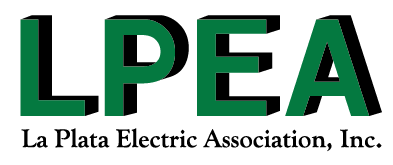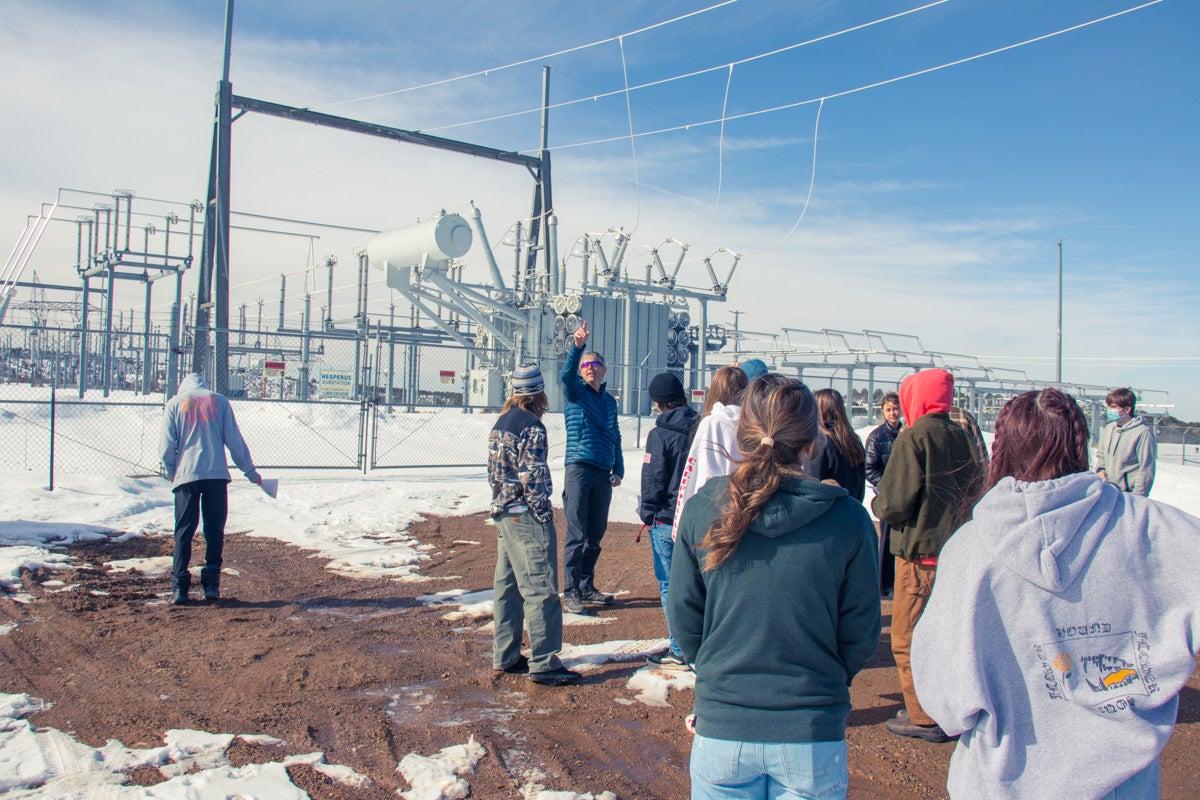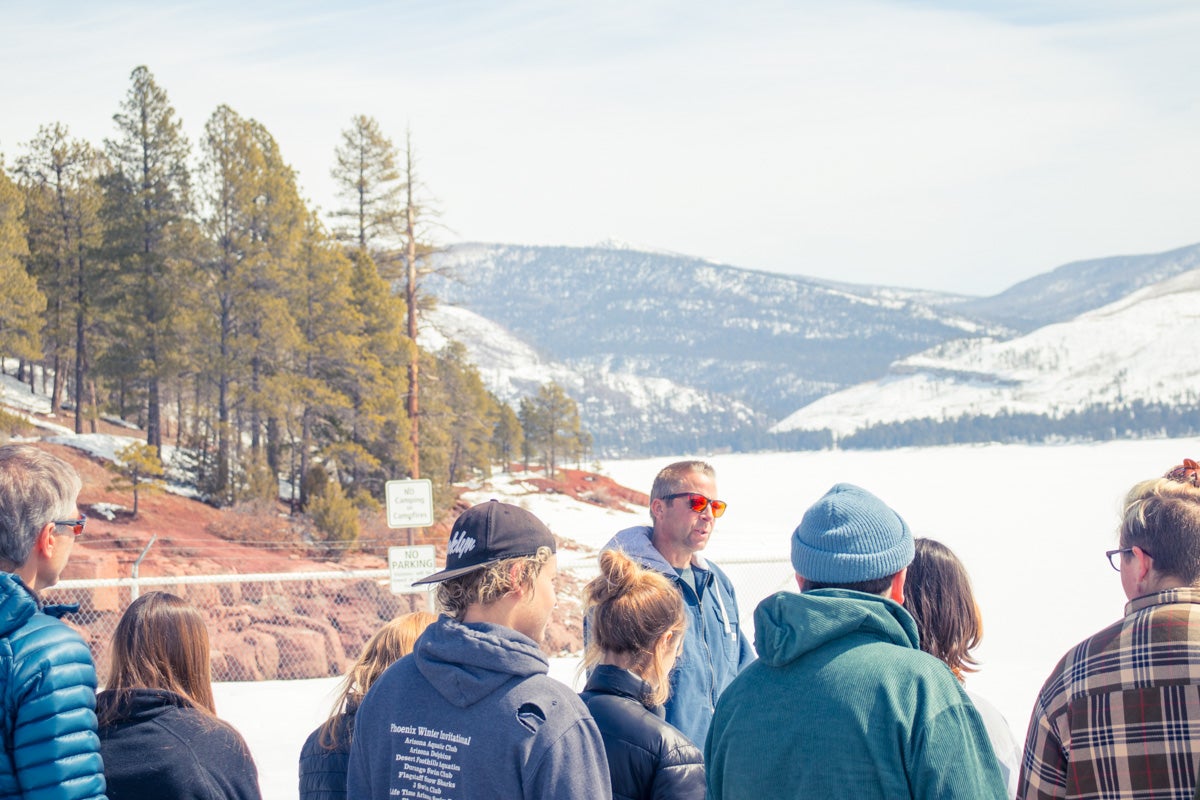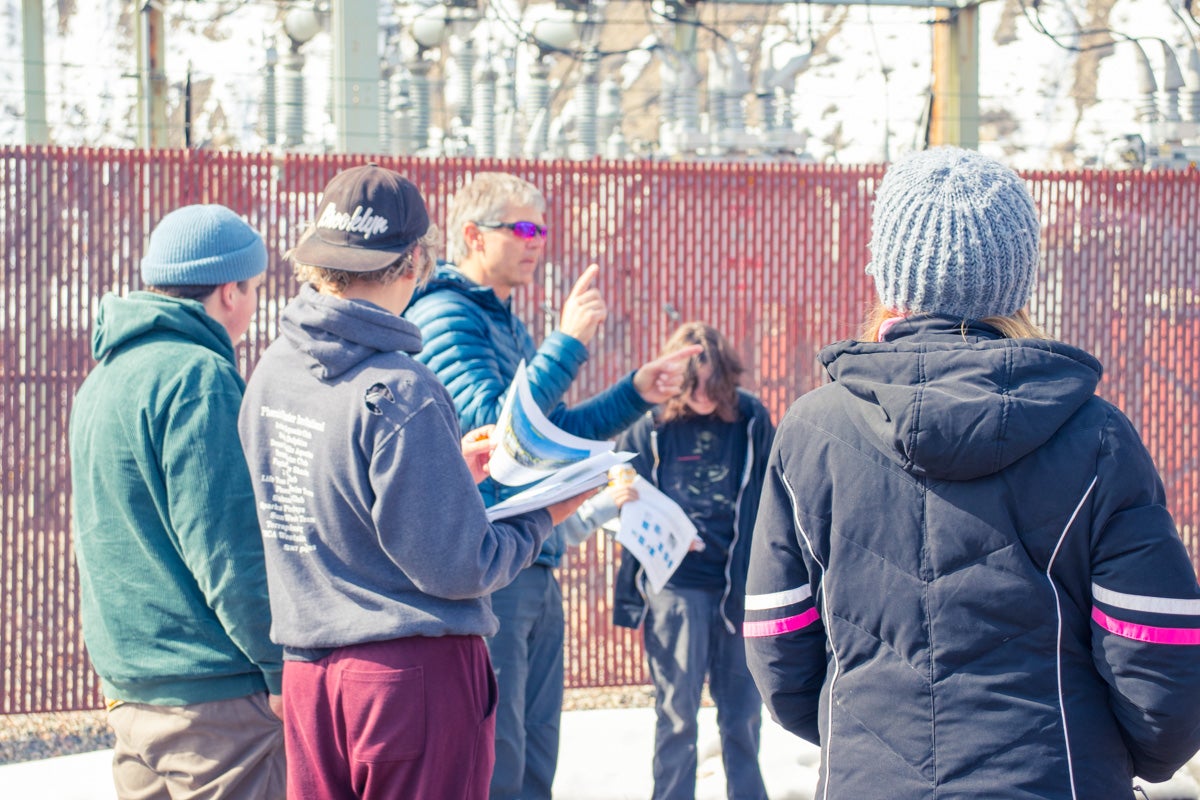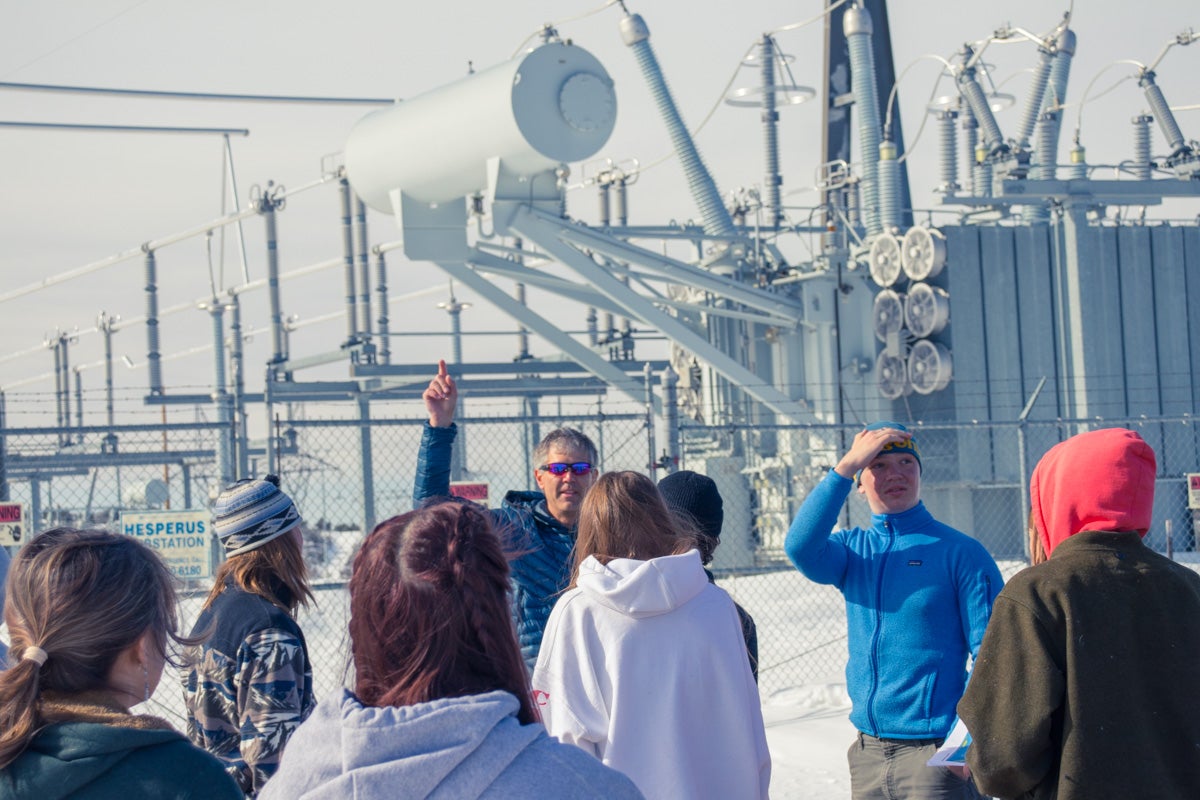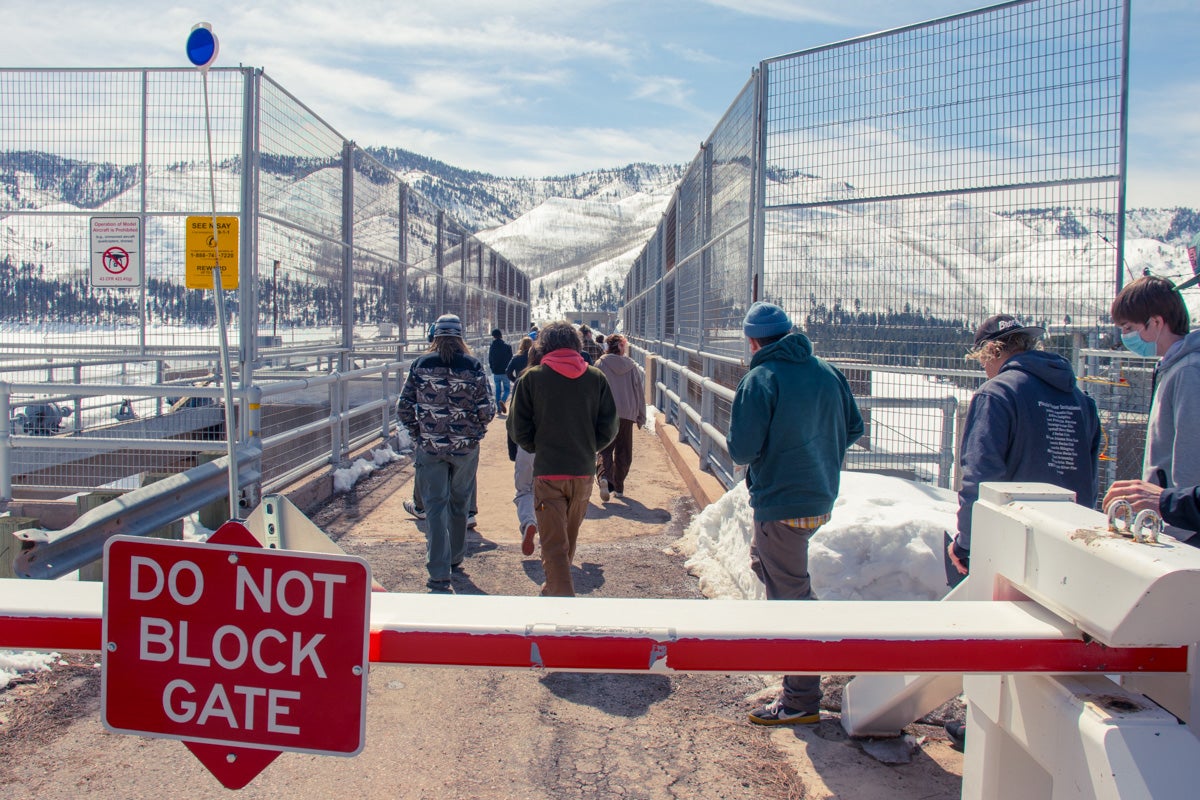In late March, sophomores from Animas High School joined LPEA to learn about the path electricity takes to reach their school. To start the journey, Mike Canterbury from Pine River Irrigation District met students at the Vallecito Hydro dam to show how the power of water can be harnessed to generate electricity. Operational since 1989, the dam generates about 5.8 MW of power at its peak, which is enough to power 2,500 homes. The day of the visit, the dam was producing 4.2 MW due to lower water levels. For perspective, Lemon Lake Dam produces .08 MW, Navajo Dam produces 32 MW, and Glen Canyon Dam at Lake Powell produces a whopping 1,320 MW.
After power is generated, it must travel to where it is needed. Students received an overview of the large-scale transmission infrastructure that brings electricity across hundreds of miles to LPEA’s small-scale distribution infrastructure. They learned how substations then convert high-voltage electricity from transmission lines into lower-voltage power suitable for residential and commercial use, and how this electricity then heads through distribution lines to power the school and other buildings in the community.
In addition to learning about the technical aspects of energy generation and distribution, students were encouraged to think about the environmental impact of these processes. They discussed the benefits of renewable energy sources, like the hydroelectric power generated by the Vallecito Dam, in reducing greenhouse gas emissions and promoting a more sustainable and resilient energy future.
Dan Harms and Steve Smith (LPEA employees leading the groups) also introduced students to the Distributed Energy Resources (DER) concept. DER encompasses a variety of energy sources (like solar panels, wind turbines, and energy storage systems) that we can use to manage and optimize energy consumption. By using DER, communities can increase their energy efficiency and reduce the cost of LPEA’s power bill, which ensures our members get the lowest rates possible.
As the field trip concluded, students left with a new appreciation for the complex systems that provide electricity to their community. They also gained valuable insights into the role they can play in managing their energy consumption through Distributed Energy Resources.
Next, the students will continue a 5-week project on electricity and justice of energy production and consumption. As the finale, they will participate in Sophomore Inspire Week during which they will perform community service projects related to energy issues such as conducting energy audits. LPEA was glad to be a part of the kick-off of this valuable project!
If we can help with any of your school’s educational programs related to energy, let us know by e-mailing comments@lpea.coop.
